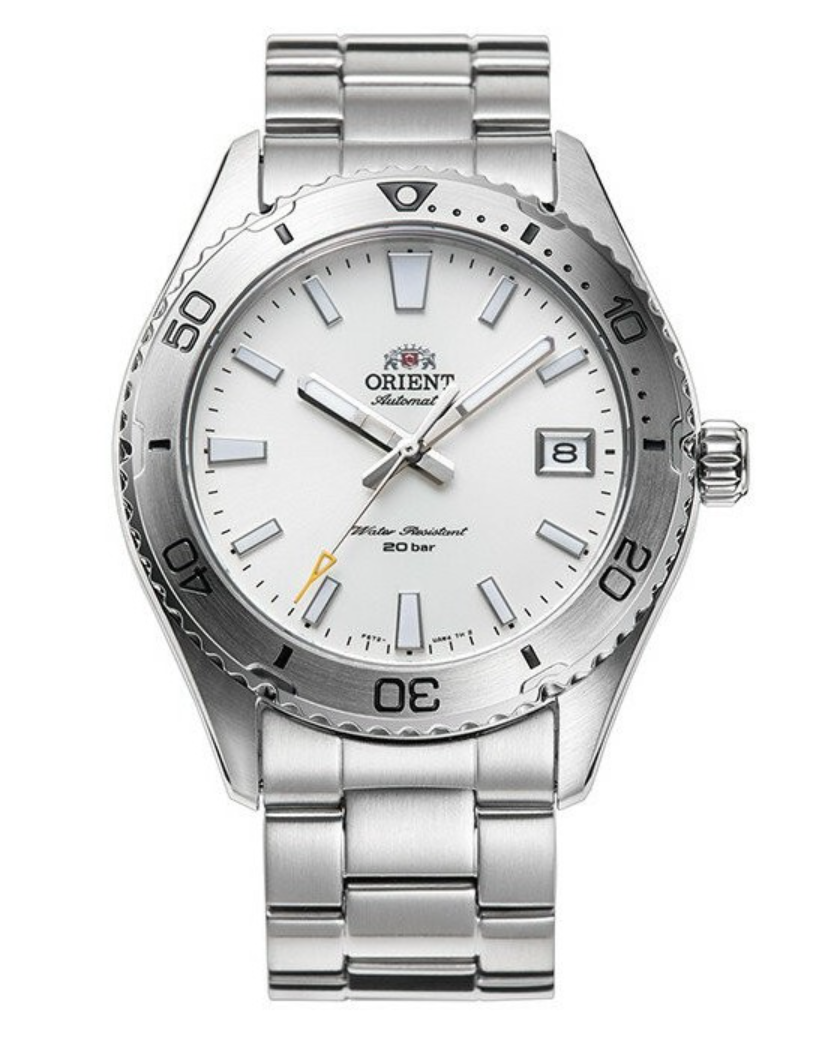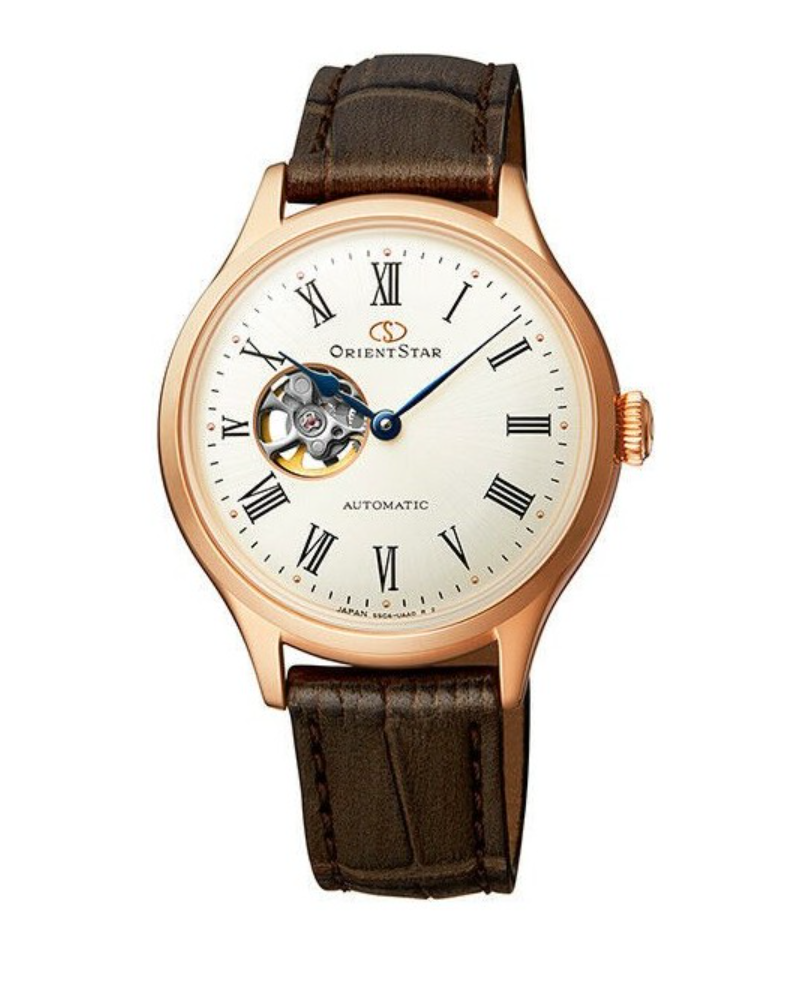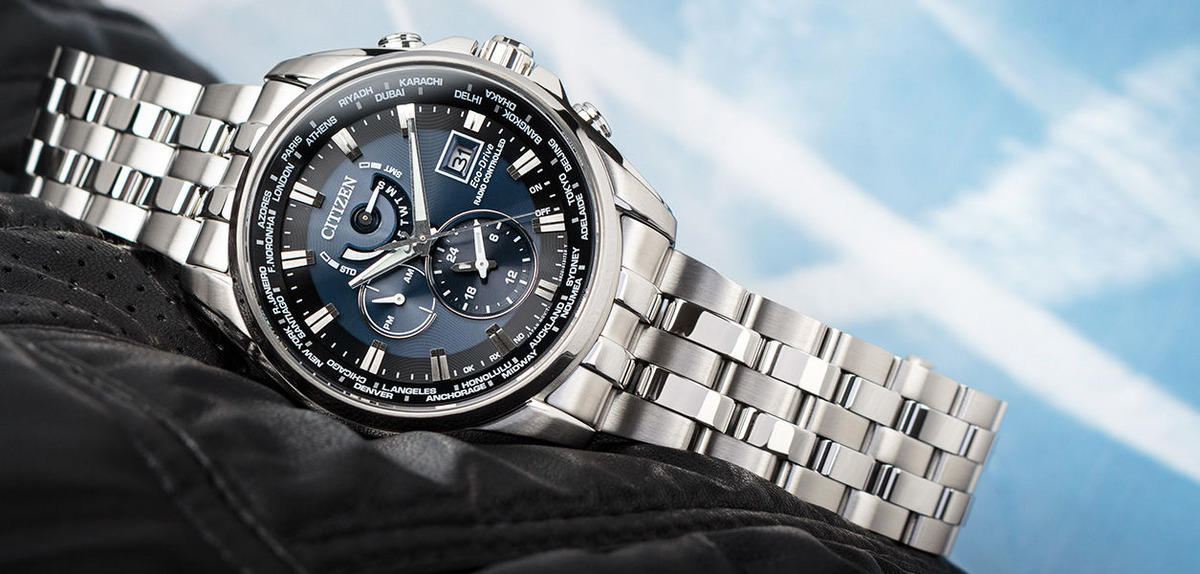Automatic Watch Servicing – Caring for Your Valuable Timepieces
An automatic watch is not just an accessory, but a precise piece of engineering that requires proper care. If you want your timepiece to work flawlessly for many years and delight you not only with its appearance but also with the perfect operation of its mechanism – be sure to check why regular servicing is crucial. In this article, we show you how to take care of an automatic watch, what professional servicing includes, how much it costs, and when it's best to do it – welcome!
What is an automatic mechanism?
Automatic mechanisms are carefully crafted devices that consist of hundreds, even thousands of high-quality small parts working together. Watches equipped with this type of mechanism are appreciated by enthusiasts and collectors for their sophisticated design and aesthetics. Many watch brands use this type of mechanism to attract customers with refined details, high durability, and a sense of owning a timepiece with soul.
Enthusiasts also pay attention to tradition, engineering, and the way the second hand flows across the dial, measuring time. The uniqueness of these timepieces lies in the combination of heritage with artistry and craftsmanship, which significantly affects their collector's value.
Feel the power of classic in a modern edition – ORIENT Sports Mako Diver Automatic RA-AC0Q03S10B is a reliable automatic that combines sports function with elegance that's impossible to overlook.
Automatic watch servicing – take care of the mechanism that works for you every day
Servicing an automatic men's watch or women's watch might seem like a topic of little importance – just something that "will be done someday," like a car technical inspection or a dentist visit. And yet, if we care about our watch working properly and actually accompanying us for many years, there's nothing to think about. Automatic mechanisms are small precise worlds enclosed in a case – a world that works all the time, regardless of whether we wear it every day or put it away in a drawer for a few weeks. And it's precisely this constant work, even with perfect construction, that requires support from time to time. Lubricant wear invisible to the naked eye, microscopic contaminants settling inside the mechanism, slight shifts caused by shocks – all of this can negatively affect its operation in the long run.
Regular servicing is more than just repair – it's action that anticipates problems before they even appear. If the watch starts running slow or fast, it's often a sign that something is happening – but it's best not to let it happen at all. A well-done inspection allows maintaining the accuracy of the movement, which for many users is not just a technical issue but also a matter of prestige. After all, a watch should work perfectly – always and everywhere. What's more, high-end watches often gain value, but only if they are properly maintained. Service history can then be an additional advantage – especially if we ever decide to sell it or pass it on.
Some of us wear a watch every day, others put it on occasionally – but regardless of the frequency of use, the mechanism works. And it's really worth taking care of it before it starts to make itself known. Professional servicing is not just maintenance, it's an investment in the future – in precision, reliability, and satisfaction from using something that really works as it should. Not by chance, but because someone took care of it.

What does automatic watch servicing include?
Servicing an automatic ladies' watch or men's watch is much more than just a quick check to see if everything works. It's a comprehensive process aimed at maintaining the precision, reliability, and longevity of the timepiece. It all starts with dismantling the mechanism and thoroughly cleaning all of its elements – removing dirt and old lubricants that lose their properties over time. Then new oils are introduced, which provide proper lubrication and minimize friction between components.
During servicing, the tightness of the watch case is also checked – gaskets are replaced if necessary, which is of great importance especially for waterproof watches. The next step is to verify the wear of parts – if any element raises concerns, it is replaced with a new one, preferably original. Finally, precise regulation of the movement is carried out, adjusting the accuracy of the mechanism's operation to the manufacturer's standards.
It's also worth mentioning watch winders – these are devices that keep the watch in motion when it's not being worn. This way, the mechanism doesn't stop, and the lubricants don't lose their properties, which positively affects its lifespan between successive servicing.
Check out: Watch winders for automatic watches
Automatic watch servicing – the price doesn't have to be frightening
Contrary to appearances, professional servicing of an automatic watch doesn't have to involve a huge expense. The final cost depends on several key factors – primarily the brand of the timepiece, its age, the level of complexity of the mechanism, and the overall technical condition. For watches from popular manufacturers that don't show signs of serious damage, servicing – including, among other things, cleaning the watch mechanism and regulating the mechanical watch – can start from about 200 zlotys.
Of course, if we're dealing with a more advanced model, significant wear of internal elements, or the need to import original parts, the price can increase – sometimes even to several thousand zlotys. It's worth remembering, however, that these are investments in the longevity and precision of a device that often has not only utility value for the owner but also emotional value. Regular servicing, including cleaning and precise regulation, allows avoiding more serious failures and enjoying reliable watch operation for many years.
How much does it cost to repair a mechanical watch?
The cost that can be generated by repairing a mechanical watch, in case of a serious failure, can be many times higher than regular servicing. In a situation where key elements of the mechanism are damaged – e.g., mainspring, balance, or bridges – the repair cost can range from several hundred to even several thousand zlotys, especially for prestigious brands. That's why it's worth acting in advance – regular servicing and inspections are definitely a more cost-effective and safer way than later saving a watch that has stopped working due to neglect.
Exceptional character in a compact form – DAVOSA Ternos Medium Automatic California 36mm is a Swiss diver that combines sports functionality with an extraordinary pink dial, attracting glances without sacrificing professionalism.
Why is servicing important for an automatic watch?
Regular servicing of an automatic watch is more than just a technical formality – it's conscious care for a precise device that is supposed to work reliably for many years. Automatic mechanisms, although extremely precise, are at the same time sensitive to the passage of time, wear of lubricants, and micro-contaminants accumulating during everyday use. Even if the watch seems to be working correctly, gradual deterioration of operating parameters may occur inside.
Neglecting basic service activities, such as cleaning or regulating an automatic watch, may in the long run lead to costly repairs or a decrease in its value. That's why servicing is not a cost, but an investment – in durability, precision of operation, and aesthetics, which will be appreciated by both the owner and a potential future buyer.
How often should an automatic watch be serviced?
Most often, it is recommended that automatic watch servicing be carried out every 3 to 5 years – this time interval is considered optimal if we care about maintaining full functionality of the mechanism. This interval allows for effective refreshing of the watch's interior: replacement of lubricants, cleaning, tightness control, and precise regulation of the automatic watch according to the manufacturer's specifications.
It's worth remembering, however, that some brands provide more detailed guidelines for servicing – especially for models with unusual complications or increased water resistance. Therefore, it's best to stick to the schedule recommended by the manufacturer or consult with a trusted watchmaker. This way, we can be sure that the watch will work flawlessly for many years. If you're wondering how to take care of an automatic watch on a daily basis – apart from regular servicing – it's worth avoiding strong shocks, storing it in appropriate conditions, and considering using a watch winder when the timepiece is not being worn.

Immerse yourself in the combination of art and precision – EPOS Oeuvre d'Art Big Moon 3439.322.20.18.25 is a Swiss masterpiece with an exceptional moon phase, which makes the watch much more than just a timepiece – a true work of art.
Use our store's service or expand your watch collection – welcome to WestWatches!
Remember that in our watch store, professional service is available for customers. As part of these services, we conduct the servicing activities for watches described in this article – both those with automatic mechanisms and quartz, manual, or other mechanisms that we sell.
And if you're considering buying an automatic watch, be sure to visit the WestWatches sale section, where you'll find carefully selected timepieces at truly exceptional prices – welcome!
See popular articles

Dlaczego zmieniamy czas na zimowy w zegarkach? Tłumaczymy mechanizm i historię zmiany czasu
Dwa razy w roku cofamy lub przesuwamy wskazówki zegara, ale rzadko zastanawiasz się, po co właściwie jest zmiana czasu i dlaczego wciąż jej przestrzegamy. To nie tylko kwestia tradycji – za tym zwyczajem stoi historia, decyzje polityczne i próba lepszego wykorzystania światła dziennego. Sprawdź, jak działa mechanizm przestawienia czasu, skąd się wziął i jakie ma znaczenie dziś.

Zegarki solarne - ranking ciekawych modeli i wszystko co warto wiedzieć przed zakupem
Zegarki solarne to nowoczesne połączenie stylu i praktyczności – zasilane światłem, niezawodne i przyjazne środowisku. Dzięki wbudowanym panelom solarnym nie wymagają regularnej wymiany baterii, co czyni je wyjątkowo wygodnymi w codziennym użytkowaniu i bardziej ekologicznymi. W naszym rankingu znajdziesz modele, które wyróżniają się nie tylko atrakcyjnym designem, ale również bogatą funkcjonalnością i imponującą trwałością, idealne dla wymagających użytkowników poszukujących zegarka na lata.

Jak zmienić czas na zimowy w Casio G Shock?
Zmiana czasu potrafi zamieszać – nie tylko w głowie, ale i na nadgarstku. Jeśli nosisz G-Shocka i chcesz szybko przestawić go na czas zimowy, nie musisz zagłębiać się w instrukcje ani zgadywać, który przycisk za co odpowiada. W tym poradniku znajdziesz konkretne wskazówki, proste kroki i sprawdzone triki, które pomogą Ci bez nerwów ustawić zegarek Casio G-Shock – niezależnie od modelu, który masz.

Jak dobrać biżuterię do zegarka? Zasady, inspiracje i gotowe triki stylizacyjne
Dobranie biżuterii do zegarka to nie tylko kwestia gustu, ale przede wszystkim umiejętność stworzenia spójnej, stylowej całości. Zegarek może być subtelnym tłem dla dodatków albo główną ozdobą, wokół której budujesz cały look. Sprawdź, jak łączyć metale, wybierać bransoletki i tworzyć zestawienia, które zawsze wyglądają elegancko i nowocześnie.

Jaki zegarek na 40 urodziny wybrać? TOP 5 wyborów
Czterdzieste urodziny to wyjątkowy moment – symboliczny etap życia, w którym zegarek może stać się nie tylko praktycznym dodatkiem, ale także wyrazem stylu, statusu i osobowości. Zegarek na 40 urodziny powinien podkreślać dojrzały gust, elegancję oraz indywidualność obdarowanego – kluczowe znaczenie ma jakość, prestiż marki oraz funkcjonalność dopasowana do codziennych aktywności Poniżej przedstawiamy TOP 5 zegarków męskich na 40 urodziny dostępnych w ofercie sklepu WestWatches – zapraszamy!

Jaki zegarek kupić na dzień chłopaka? TOP 6 propozycji od West Watches
Dzień Chłopaka to świetna okazja, aby podarować coś wyjątkowego – prezent, który będzie nie tylko praktyczny, ale i symboliczny. Zegarek to zawsze trafiony wybór – elegancki, funkcjonalny i trwały. Ważne jednak, by dopasować go do stylu oraz trybu życia obdarowywanego. Czy woli klasyczną elegancję, sportowy look, a może nowoczesne technologie? Poniżej znajdziesz sześć propozycji z oferty WestWatches.pl, które sprawdzą się jako idealny prezent.

Czym jest bezel zegarka? Wyjaśniamy jego zastosowanie i zalety
Bezel to detal, który często umyka uwadze, a w rzeczywistości decyduje o funkcjonalności, stylu i bezpieczeństwie zegarka. To właśnie ten pierścień sprawia, że czasomierz staje się czymś więcej niż tylko ozdobą na nadgarstku. Dowiedz się, co to jest bezel w zegarku, jak działa i do czego możesz go wykorzystać na co dzień.

Tachometr - co to jest i jaką funkcję pełni w zegarku?
Tachometr w zegarku to coś więcej niż ozdobna skala na tarczy – to praktyczne narzędzie, które pozwala w kilka sekund obliczyć średnią prędkość na wybranym dystansie. Choć dziś korzystasz z GPS-u, ta klasyczna funkcja nadal ma swój urok i znaczenie, łącząc precyzję z historią zegarmistrzostwa.

Bransoleta mesh - czym jest i do jakich stylizacji pasuje?
Jeśli szukasz dodatku, który połączy wygodę codziennego noszenia z elegancją biżuterii, bransoleta mesh może być strzałem w dziesiątkę. Ten charakterystyczny, mediolański splot od lat zdobywa uznanie zarówno wśród miłośników klasycznych zegarków, jak i fanów nowoczesnych smartwatchy. Zanim zdecydujesz się na zakup, sprawdź, co dokładnie oznacza ten typ bransolety, jakie są opinie użytkowników i w jakich stylizacjach sprawdza się najlepiej.












